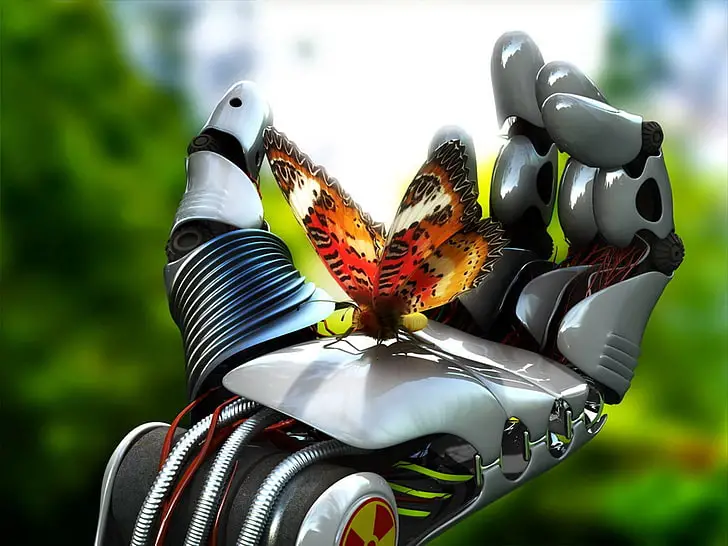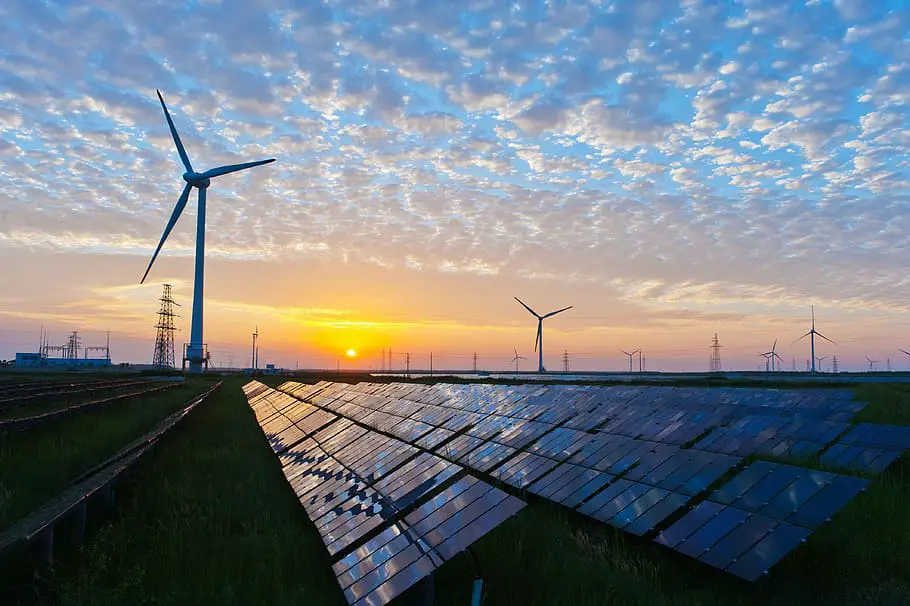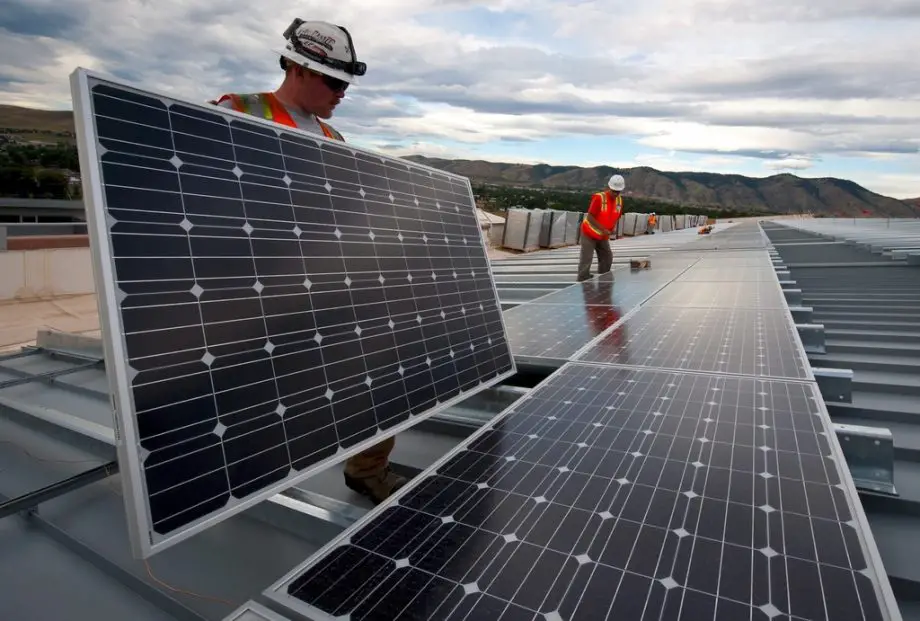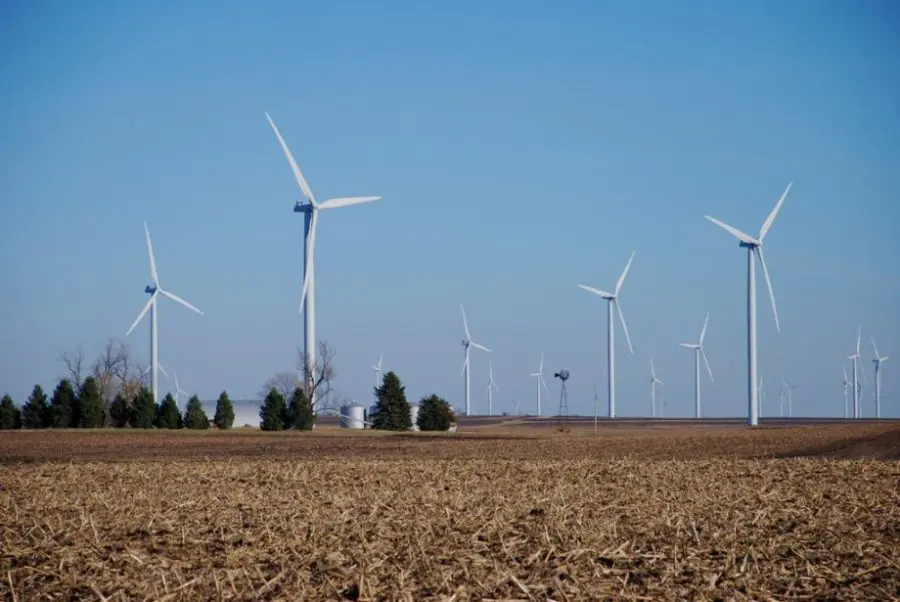
Ever wondered why do we need green technology? Unravel its significance, benefits, and its role in crafting a sustainable future for everyone.
Why do we need green technology? As we navigate through the 21st century, this question becomes increasingly relevant.
Green technology, or ‘Greentech’, is not just a buzzword; it’s a beacon guiding us towards a sustainable future.
It’s about innovative solutions that protect our environment while also offering economic and health benefits.
So, let’s dive in and explore why green technology is not just a need, but a necessity for our planet and future generations.
Why Do We Need Green Technology?
Welcome to our deep dive into the world of green technology! If you’ve ever wondered, ‘Why do we need green technology?’ then you’re in the right place.
In this post, we’ll explore the environmental, economic, and health benefits of green technology.
We’ll also look at some fascinating examples, discuss the challenges we face in implementing it, and gaze into the crystal ball to see its future.
And for those burning questions you’ve been eager to ask, we’ve got a handy FAQ section too.
So, let’s embark on this journey to understand why green technology is so crucial in our lives today.
Definition of Green Technology
Let’s start with the basics. What exactly is green technology?
Also known as ‘Greentech’ or ‘clean technology’, green technology refers to products, services, or practices that improve operational performance, conserve natural resources, and reduce or eliminate the negative environmental impact of global warming.
It’s all about using science and green technologies to create environmentally friendly sustainable solutions.
From renewable energy sources like solar energy and wind power, and electric vehicles to energy-efficient appliances and sustainable building materials, green technology is all around us!
Brief Overview of the Importance of Green Technology
Now that we’ve defined green technology, let’s talk about why it’s so important.
The significance of green technology extends far beyond just being ‘good for the environment’.
It’s about creating a sustainable future where economic growth and environmental responsibility go hand in hand.
Green technology helps us reduce greenhouse gas emissions, conserve natural resources, and even create jobs in new, innovative industries.
Plus, it’s not just about the big picture. On a personal level, green technology can lead to cost savings (think lower energy bills thanks to energy-efficient appliances) and healthier lifestyles.
So, whether we’re looking at the global scale or our own backyards, the importance of green technology can’t be overstated.
The Importance of Green Technology
Moving on to the heart of the matter, let’s delve into the importance of green technology.
You might be thinking, ‘Sure, it sounds great, but why is it so crucial?’ Well, green technology plays a pivotal role in our world today, and its importance is multi-faceted.
From environmental preservation to economic growth and health benefits, green technology is a key player in shaping a sustainable future.
So, let’s unpack this and explore the different ways green technology is making a significant impact on our planet and our lives.
Environmental Benefits
Reduction in Greenhouse Gas Emissions
One of the most significant environmental benefits of green technology is its role in reducing greenhouse gas emissions.
Traditional energy sources like coal and natural gas release a large amount of carbon dioxide emissions and other harmful gases into the atmosphere.
Green technology, on the other hand, harnesses renewable energy sources like wind energy, solar, and hydroelectric power, which produce little to no greenhouse gases.
By reducing these emissions, we’re taking a big step toward mitigating climate change.
Conservation of Natural Resources
Another key environmental benefit of green technology is the conservation of our precious natural resources.
Traditional methods of energy production often involve the extraction and consumption of finite resources, such as coal and oil.
However, green technology focuses on using renewable resources that are naturally replenished.
This means we’re not depleting our planet’s resources, but rather using what nature continually provides us.
Economic Benefits
Cost Savings from Energy Efficiency
Green technology isn’t just good for the planet, it’s good for our wallets too!
Energy-efficient appliances, for example, use less electricity to perform the same tasks as their less efficient counterparts.
This means lower energy bills for households and businesses. Plus, energy-efficient buildings require less energy for heating and cooling, leading to further savings.
Job Creation in Green Tech Industries
The green tech industry is a rapidly growing sector that’s creating jobs at an impressive rate.
From engineers designing solar panels to workers installing wind turbines, the industry is providing a wide range of employment opportunities.
These jobs aren’t just good for the economy; they’re also helping to drive the transition toward a more sustainable future.
Health Benefits
Reduction in Pollution-Related Health Issues
Green technology also has significant health benefits. By reducing pollution, we’re also reducing the incidence of health issues related to poor air quality.
Conditions like asthma, lung disease, and even heart disease can be exacerbated by pollution. By embracing green technology, we’re promoting healthier air and healthier communities.
Promotion of Healthier Lifestyles
Finally, green technology promotes healthier lifestyles. Consider the rise of electric bikes and scooters, for example.
These green tech innovations encourage physical activity, reduce traffic congestion, and lower carbon emissions.
It’s a win-win-win! So, whether it’s through cleaner air or promoting active transport, green technology is making a positive impact on our health.
Examples of Green Technology
Having explored the importance of green technology, let’s now turn our attention to some real-world examples.
You might be surprised to learn just how many forms green technology can take, and how many areas of our lives it can touch.
From the energy we use to power our homes, to the appliances we use every day, to the buildings we live and work in green technology is everywhere!
So, let’s dive in and take a closer look at some of these innovative and impactful examples of green technology.
Renewable Energy Sources
Solar Power
Let’s start with a bright idea, solar power! This form of renewable energy harnesses the power of the sun to generate electricity.
Solar panels, which can be installed on rooftops or in large outdoor arrays, convert sunlight into electricity.
It’s a clean, renewable source of energy that reduces our reliance on fossil fuels and helps cut down on greenhouse gas emissions.
Wind Power
Next up, let’s talk about wind power. This involves using wind turbines to convert the kinetic energy from the wind into electrical power.
Wind farms, which can be located on land or offshore, are a common sight in many parts of the world.
Like solar power, wind power provides renewable sources of energy that don’t produce harmful emissions.
Hydroelectric Power
Last in our trio of renewable energy sources is hydroelectric power.
This involves harnessing the energy of flowing or falling water to generate electricity, typically through the use of a dam and a turbine.
It’s a powerful and efficient source of renewable energy, and it also allows for energy storage as the water in the dam can be released to generate power when it’s needed.
Energy Efficiency
Energy-Efficient Appliances
Moving on to energy efficiency, let’s start with energy-efficient appliances.
These are appliances that are designed to use less electricity than standard appliances to perform the same tasks.
From refrigerators to washing machines to air conditioners, energy-efficient appliances can help households and businesses reduce their energy consumption and save money on their electricity bills.
Smart Grids and Meters
Another example of energy efficiency in action is the use of smart grids and meters.
Smart grids use digital technology to monitor and manage the transport of electricity from all generation sources to meet the varying electricity demands of end users.
Smart meters, on the other hand, provide real-time information about energy use, allowing consumers to make more informed decisions about their energy consumption.
Green Building
Sustainable Materials
In the realm of green building, sustainable materials are a key component.
These are materials that are either renewable or have a low environmental impact in terms of their production and disposal.
Examples include bamboo, recycled steel, and reclaimed wood. Using sustainable materials in construction can reduce the environmental impact of building projects and create healthier indoor environments.
Energy-Efficient Design
Finally, energy-efficient design is another important aspect of green building.
This involves designing green buildings in a way that reduces their energy needs.
For example, this could involve orienting a building to take advantage of natural light and heat, installing high-quality insulation, or using energy-efficient heating and cooling systems.
Energy-efficient design not only reduces a building’s negative impact, but can also result in significant cost savings over the building’s lifetime.
Challenges and Solutions in Implementing Green Technology
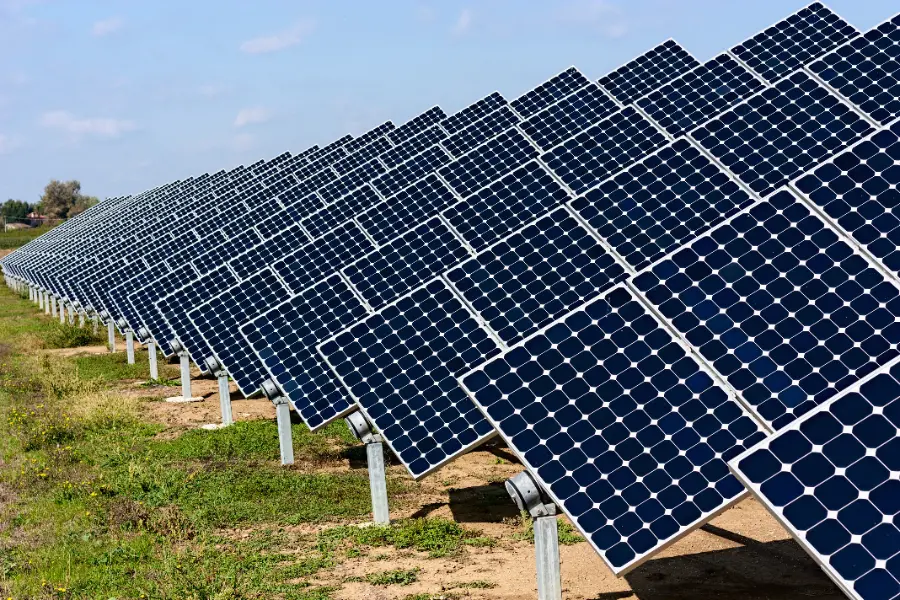
As much as we champion green technology, it’s important to acknowledge that it’s not all smooth sailing.
Like any significant change, the shift towards green technology comes with its own set of challenges.
But don’t worry, it’s not all doom and gloom! For every challenge, there are innovative solutions being developed and implemented.
In this section, we’ll delve into some of the hurdles we face in our journey toward a greener future, and more importantly, we’ll explore the promising solutions that are helping us overcome these obstacles.
So, let’s dive in and get to grips with the challenges and solutions in implementing green technology.
High Initial Costs
One of the most common challenges associated with green technology is the high initial costs.
For instance, installing solar panels or wind turbines can require a significant upfront investment.
Similarly, energy-efficient appliances and green building materials can be more expensive than their conventional counterparts.
However, it’s important to note that these initial costs are often offset by long-term savings.
For example, while solar panels may be expensive to install, they can significantly reduce or even eliminate electricity bills over time.
Technological Limitations
Next, let’s talk about technological limitations.
While we’ve made incredible strides in green technology, there are still areas where we’re finding our feet.
For instance, while renewable energy sources like wind and solar power are fantastic, they’re also intermittent.
The sun doesn’t always shine, and the wind doesn’t always blow.
This means we need effective ways to store this energy for use when it’s not being generated.
Thankfully, advances are being made in energy storage technology, such as improved batteries, which are helping to address this challenge.
Policy and Regulatory Challenges
Policy and regulatory challenges also play a significant role.
The industrial revolution led to large-scale damage to our environment and as a result in the United States, the U.S. Environmental Protection Agency (EPA) was formed and serves as a watchdog over the industry.
It helps set standards and regulate industries in an effort to reduce pollution and other negative impacts on the environment.
The transition to green technology often requires changes in policy and regulation, which can be slow and complex.
For example, subsidies for fossil fuels can make it harder for renewable energy to compete on a cost basis.
However, as awareness of the importance of green technology grows, we’re seeing more and more policies being implemented to support its adoption.
Public Awareness and Acceptance
Finally, public awareness and acceptance is a crucial factor.
For green technology to be widely adopted, people need to understand its benefits and how it works.
This is where education and communication come in.
By raising awareness about the importance of green technology and how it can benefit individuals, communities, and the planet, we can help drive its acceptance and adoption.
So, while there are challenges in implementing green technology, there are also plenty of solutions and opportunities.
It’s a dynamic and exciting field that’s continually evolving and improving.
The Future of Green Technology
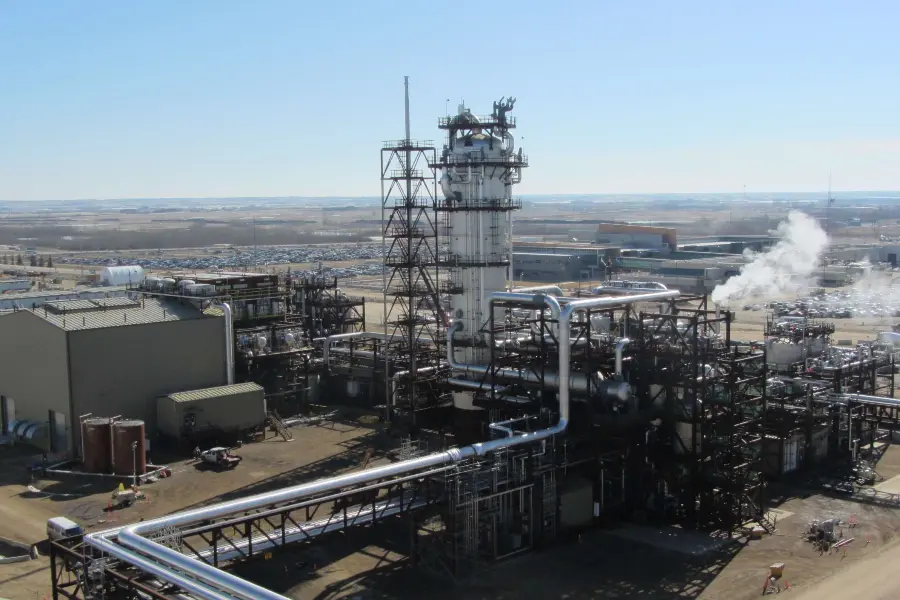
Now that we’ve explored what green technology is, why it’s important, and some of the challenges we face, it’s time to look ahead.
What does the future hold for green technology? Well, if current trends are anything to go by, the future looks bright indeed!
From innovative breakthroughs to policy changes and growing public awareness, the momentum behind green technology is only set to increase.
So, let’s take a journey into the future and explore what’s on the horizon for green technology.
Innovations on the Horizon
When it comes to the future of green technology, one thing’s for sure: innovation won’t be slowing down anytime soon.
We’re already seeing exciting developments in areas like energy storage, with advancements in battery technology making renewable energy more reliable and efficient.
And let’s not forget about emerging technologies like carbon capture and storage, which could play a crucial role in reducing greenhouse gas emissions.
Plus, with the rapid advancements in artificial intelligence and machine learning, we can expect to see even more innovative solutions in the green tech space.
Role of Policy and Regulation
Policy and regulation will continue to play a pivotal role in the future of green technology.
As the impacts of climate change become increasingly apparent, there’s a growing push for policies that support the adoption of green technology.
This could include everything from subsidies for renewable energy to regulations that encourage energy efficiency.
The hope is that with the right policies and regulations in place, we can accelerate the transition to a more sustainable, green tech-powered future.
Importance of Public Participation
Last but certainly not least, the future of green technology will be heavily influenced by public participation.
After all, the success of green technology doesn’t just depend on technological advancements or supportive policies.
It also relies on people embracing these technologies in their daily lives.
Whether it’s choosing to install solar panels on our homes, buying energy-efficient appliances, or supporting businesses that prioritize sustainability, we all have a part to play in reducing our carbon footprint.
By participating in the green tech revolution, we can help drive demand for these technologies and make a sustainable future a reality.
Why Do We Need Green Technology? FAQs
Throughout our exploration of green technology, you’ve probably had a few questions pop up. Well, you’re in luck!
In this section, we’ll tackle some of the most frequently asked questions about green technology.
From understanding what it is to why it’s important, we’ve got you covered.
So, let’s dive into these FAQs and clear up any lingering queries you might have about green technology.
Q: What is green technology?
A: Green technology, also known as ‘Greentech’ or ‘clean technology’, refers to environmental technology products, services, or practices that improve operational performance, conserve natural resources, and reduce or eliminate negative environmental impact.
It’s about using science and technology to create environmentally friendly solutions.
Q: Why is green technology important?
A: Green technology is important for several reasons. It helps reduce greenhouse gas emissions, conserve natural resources, and can lead to economic growth through job creation in green tech industries.
Additionally, it promotes healthier lifestyles by reducing pollution-related health issues.
Q: What are some examples of green technology?
A: Examples of green technology include renewable energy sources like solar power, wind power, and hydroelectric power, energy-efficient appliances and smart grids, and green building practices that use sustainable materials and energy-efficient design.
Q: What are the challenges in implementing green technology?
A: Some of the challenges in implementing green technology include high initial costs, technological limitations, policy and regulatory challenges, and the need for greater public awareness and acceptance.
Q: How can I contribute to the use of green technology?
A: There are many ways you can contribute to the use of green technology.
This could include using energy-efficient appliances in your home, supporting renewable energy sources, choosing to buy products from companies that prioritize sustainability, or even advocating for policies that support green technology.
Every little bit helps in making a sustainable future a reality.
Why Do We Need Green Technology? Final Thoughts
As we wrap up our deep dive into green technology, it’s clear that this isn’t just a passing trend.
Green technology is a crucial part of our journey toward a more sustainable future.
From understanding what it is and why it’s important, to explore real-world examples and future possibilities, we’ve covered a lot of ground.
But remember, the journey doesn’t end here. As we move forward, each of us has a role to play in embracing and promoting green technology.
So, let’s take a moment to reflect on what we’ve learned and look ahead to the exciting possibilities that green technology holds.
Recap of the Importance of Green Technology
To recap, green technology holds immense importance in our world today. It’s not just about being environmentally friendly.
It’s about creating a sustainable future where we balance our economic growth with the well-being of our planet.
Green technology helps us reduce greenhouse gas emissions, conserve natural resources, and even offers economic and health benefits.
From renewable energy sources to energy-efficient appliances and sustainable building practices, green technology is making a significant impact on our lives and our planet.
Call to Action for Readers to Support Green Technology
Now, it’s over to you. Supporting green technology isn’t just the responsibility of governments or big corporations.
We all have a role to play. Whether it’s making energy-efficient choices at home, supporting businesses that prioritize sustainability, or advocating for green policies, every action counts.
Remember, the choices we make today will shape the world of tomorrow.
So, let’s all do our part to support green technology and create a sustainable future for ourselves and generations to come.

